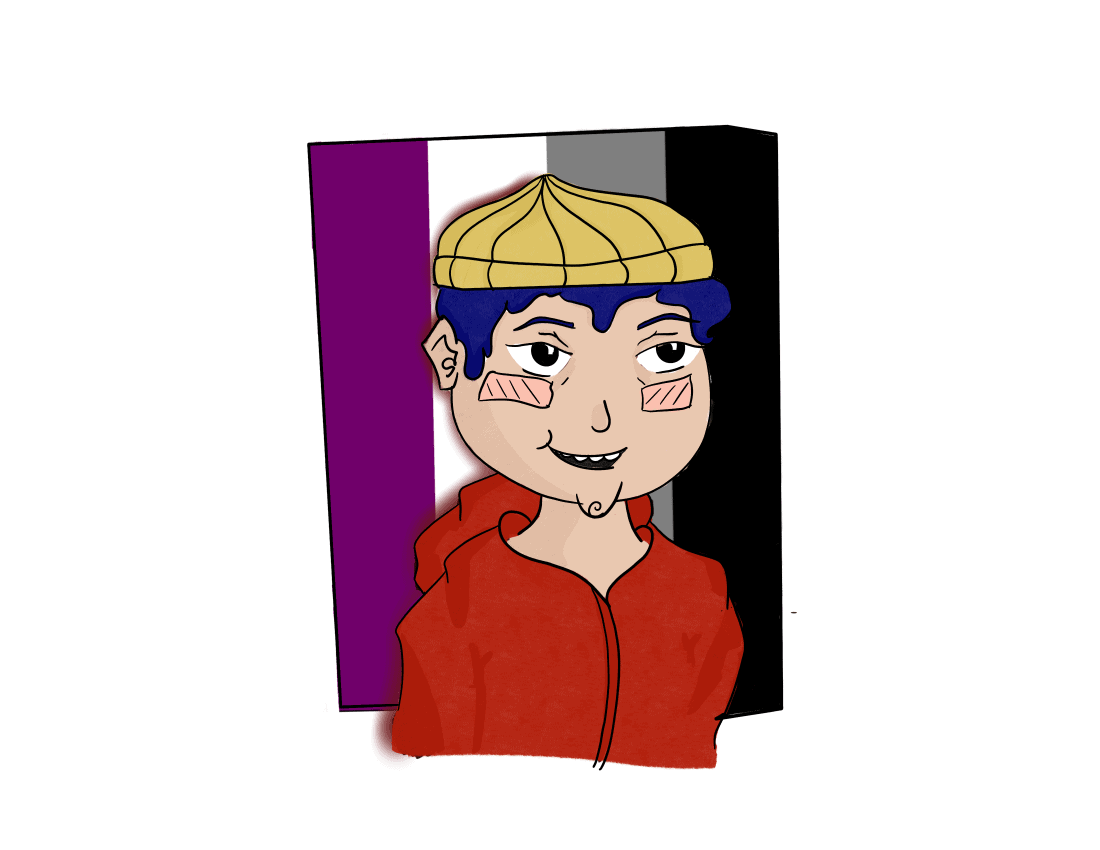
Asexuality is a sexual identity describing those who experience little to no physical attraction and/or desire for sex. “Ace” is short for asexual.
There are a few different types of asexuality. While “asexual” in itself is a fine title, many people identify as graysexual, meaning they experience sexual attraction rarely or in very specific situations. Or demisexual — they can sometimes experience it after establishing an emotional connection with another person.
Both terms fall under the asexual umbrella, and all three are represented by the black, gray, white and purple striped flag.
It is worth noting that asexuality doesn’t define a person’s romantic interests. Asexual people can still be in romantic relationships — sexual or non-sexual. Alternatively, people with no interest in romance are aromantic, or “aro” for short.
A person’s romantic orientation reflects on who they’re interested in having a relationship with while their sexual orientation reflects on who they’re physically attracted to. Everyone has both a romantic and sexual orientation, but the two types don’t necessarily align. All in all, there is no one way to be ace, and acknowledging the diversity within the ace community is another reason why Ace Week is important.
Ace Week began in 2010 with a different name, Asexual Awareness Week, but the same mission — to increase awareness and build a community for ace people.
With such a low percentage of the population being ace — estimates hang around one per cent but there aren’t conclusive findings to back this — and because of its intrapersonal nature, asexuality is one of the lesser understood sexualities.
In fact, because so few people know about it, many asexuals grow up without understanding themselves. Awareness is not only for the ace community to inform the general public but also for people who could potentially identify with it.
A lack of ace media representation also contributes to people’s lack of knowledge. Although Netflix-original BoJack Horseman has been a game-changer due to its portrayal of asexual, entrepreneurial oddball Todd Chavez, it has received some backlash for using Todd primarily as comic relief.
Despite a lack of on-screen dialogue regarding the matter, the most well-known asexual is probably Spongebob Squarepants. Creator Stephen Hillenburg once called him “almost asexual” in response to a controversy regarding Spongebob’s orientation.
While yes, he is a sponge — insert spiel about asexual reproduction here — Mr. Squarepants has no love life. And his parents’ relationship counters the idea that romantic attraction is impossible for his species — he’s simply aromantic and asexual, or aroace for short.
While there doesn’t seem to be any official Ace Week events in Saskatchewan, there are many ways to be involved in the ace community. OUTSaskatoon has regular ACE Space meetings and asexual people are welcome at the USSU Pride Centre.
Some aces wear black rings on their right middle fingers to identify themselves in public — the rings symbolize asexuality and act to instill a sense of community in the wearer. Building off from this calling card, aros have a more obscure variation of this where they don white rings.
For those avoiding in-person interaction, the internet is also a wonderful contributor to the ace community. Asexuality Visibility & Education Network, or AVEN, is the largest online platform for aces — an excellent source of information and means of connecting with others.
—
Chelaine Kirsch
Samantha Langer